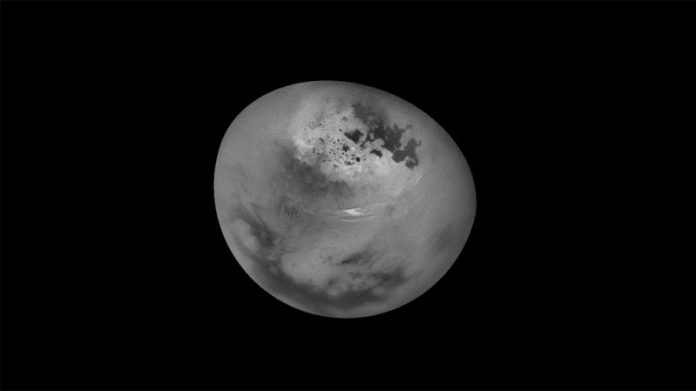NASA’s Cassini spacecraft took a video of methane clouds moving across Saturn’s moon, Titan.
From October 29 to October 30, Cassini snapped an infrared picture of Titan’s smoggy northern hemisphere, currently in its summer season, every 20 minutes for 11 hours. This mesmerizing NASA time-lapse was spliced together from that data, which reveals the life cycle of the alien world’s methane gas clouds that sweep over its landscape at a speed of about 14 to 22 miles per hour.
Titan is bigger than the planet Mercury, and aside from Earth and Venus, it’s the only known terrestrial world with a dense atmosphere in the solar system. Pictures taken by the Huygens probe (which Cassini delivered to Titan in 2005) revealed a world swamped by liquid methane lakes and oceans, and rich in hydrocarbons and organic compounds.
These oddities make Titan a particularly tantalizing destination to scientists, for reasons ranging from potential resource extraction to the possibility that the moon could host some kind of weird cyanide-based lifeforms.
Cassini’s continued monitoring of Titan’s weather patterns is a key step towards comprehending the complex dynamic cycles on this bizarro-world. According to the Jet Propulsion Laboratory (JPL), “models of Titan’s climate have predicted more cloud activity during early northern summer than what Cassini has observed so far, suggesting that the current understanding of the giant moon’s changing seasons is incomplete.”
Cassini, which has entered its final year of service, will hopefully solve some of these mysteries before it fatally flies into the planet it has spent over a decade orbiting and observing, on September 15, 2017. Before it signs off, the orbiter will be making numerous close passes with Titan that could shed more light on its seasons, weather, and other mysterious processes. Stay tuned.















